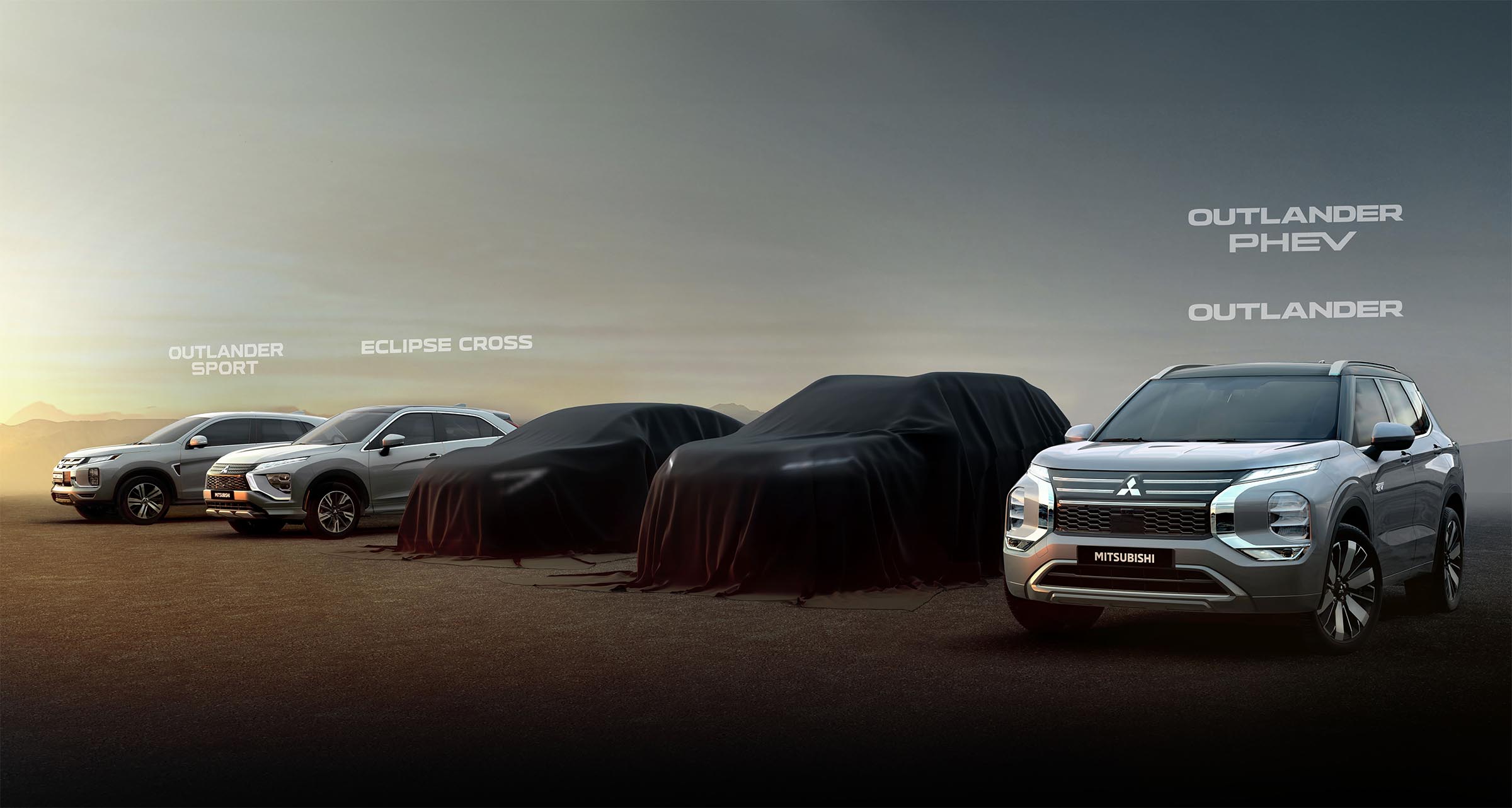Despite being hammered by auto import tariffs, Mitsubishi is betting big on the U.S. market, the company told dealers on Friday. It plans to launch a variety of new products to flesh out its currently meager product line-up. But there is one problem: a lack of U.S. production. More from Headlight.News.

Mitsubishi needs to broaden its product range, company officials acknowledged, though they’ve yet to confirm what new models will come – or when.
It’s been a rough few months for Mitsubishi Motor Corp. which reported a sharp loss for the third quarter, largely the result of tariffs on exports to the U.S. Ironically, the automaker’s U.S. CEO advised dealers on Friday that the American market is now being positioned to lead the long-troubled automaker’s global turnaround.
Among other things, the Japanese automaker plans to expand what is currently a meager line-up to include a range of new products. Some, like a proposed pickup, would be primarily designed to appeal to U.S. buyers.
There are some potentially serious speedbumps, however, including the fact that Mitsubishi is currently the only Japanese brand not to operate a production facility in the U.S. That leaves it far more vulnerable to the Trump administration’s tariffs on imported autos and auto parts.
“North America is a priority”
In the Nov. 14 letter, Mitsubishi Motors North America CEO Mark Chaffin told his retailers the automaker is undergoing “a strategic shift” that will “significantly strengthen” operations in the North America, a market that now “is a priority.”
“While details remain confidential, this could represent a game-changing moment for Mitsubishi dealers,” Chaffin said in the memo, the details of which were confirmed by company sources.
As to what could be in store, the automaker earlier this year signaled that it is exploring options to jointly develop a new SUV in cooperation with Japanese alliance partner Nissan Motor Co. It has also given signals it may return to the sedan market it walked away from with the end of production of the Mirage last year. And there is speculation, according to two sources, that a passenger van could follow, along with a pickup – the latter being the sort of product that could prove particularly useful for building up U.S. market demand.
New products are critical
Among mainstream manufacturers operating in the U.S., Mitsubishi is one of the weakest, selling just 73,400 in the States through the end of September, down about 11% year-over-year. With the end of Mirage production, the automaker now offers just three variants of its Outlander SUV and said Sam Fiorani, lead analyst with AutoForecast Solutions, most buyers turn to the company because those products are among the most affordable in their segment.
“Dealers have to be happy they’re thinking outside the box and not just coming up with another Outlander derivative,” said Fiorani.
For his part, Mitsubishi dealer board Chairman R. C. Hill was pleased with Mitsubishi’s new strategy, telling Automotive News, “We could use an entry-level sedan as many OEMs are leaving the segment.” Hill, who owns two stores in Florida, added that, “Every Mitsubishi dealer would like a truck.”
More Mitsubishi News
- Nissan, Mitsubishi Finally Take Advantage Of Their Alliance
- Mitsubishi Adding “Off-Road-Focused” SUV to Line-Up
- Mitsubishi Confirms New EV Coming Next Summer
Riding the U.S. rollercoaster

The “triple-zero” marketing plan for products like this Mitsubishi Eclipse proved to be a financial disaster for the automaker.
It’s not the first time the automaker has bet big on the market – though it’s had a rollercoaster ride since introducing its first product under its own brand name in 1982. (It previously offered some models through the old Chrysler Corp., such as the rebadged Plymouth Arrow.) For the next decade, Mitsubishi was one of the fastest-growing import brands.
But the bottom fell out in 2003 when the automaker launched its triple-0 program, offering buyers zero percent interest, zero down payment, and zero payments for the first 90 days. It brought in a surge of young new buyers, but a disproportionate share couldn’t handle payments once they actually had to come up with cash. Many simply handed the keys back, leading to a roughly $500 million write-down that contributed to the company’s financial collapse.
Mitsubishi survived that and a subsequent crisis triggered by fraudulent emissions reports in Japan only with the help of Nissan which, in 2016, bought a 34% controlling stake in the smaller manufacturer.
Tariffs and other challenges
 For the most recent quarter ending on September 30, Mitsubishi ran up a $66.6 million loss compared to net income of $57.2 million profit the year before. Its operating profit fell 79%, to $78.7 million. Falling global demand didn’t help. But Trump tariffs generated $89.4 million in added costs during the most recent three-month period.
For the most recent quarter ending on September 30, Mitsubishi ran up a $66.6 million loss compared to net income of $57.2 million profit the year before. Its operating profit fell 79%, to $78.7 million. Falling global demand didn’t help. But Trump tariffs generated $89.4 million in added costs during the most recent three-month period.
For the moment, Mitsubishi hopes to offset those added duties thanks to a weak yen – currently set at 154 yen to the U.S. dollar. Of course, betting on the exchange rate staying this lopsided is a risky way of conducting business. But, for now, the automaker doesn’t have an alternative. It was one of the first Japanese automakers to produce vehicles in the U.S., starting in 1988 in Normal, Illinois as part of the Diamond-Star joint venture with Chrysler. The Detroit automaker sold its stake in 1991 and Mitsubishi built its last vehicle there in December 2015 – the plant subsequently sold to start-up Rivian.
Like other foreign manufacturers, Mitsubishi is under pressure to find a way to work around import tariffs, said Fiorani, but it would be a challenge for the cash-strapped company to come up with the money to set up a U.S. assembly plant – some that could push into the $1 billion range or higher.
American production

Some observers expect Mitsubishi to produce its own version of the Nissan Rogue at one of the bigger automaker’s U.S. plants.
“For them to build a U.S. plant they would need a lot higher volume,” said Fiorani, a new assembly plant likely requiring production rates of at least 100,000 vehicles annually.
But there could be an alternative, something Mitsubishi officials suggested during an earnings call last March, noted U.S. spokesman Jeremy Barnes.
“As part of the announcement after the close of the fiscal year…(company officials indicated) that Mitsubishi and Nissan will enter a study on the possibility of a jointly developed SUV that will be produced in an existing Nissan U.S. facility,” Barnes told Headlight.News.
Speculation centers around a Mitsubishi variant based on the Nissan Rogue — that brand’s best-selling product line. For his part, however, Barnes stressed that, “For now, the key portion is ‘study.’ Nothing has been confirmed yet.”




0 Comments